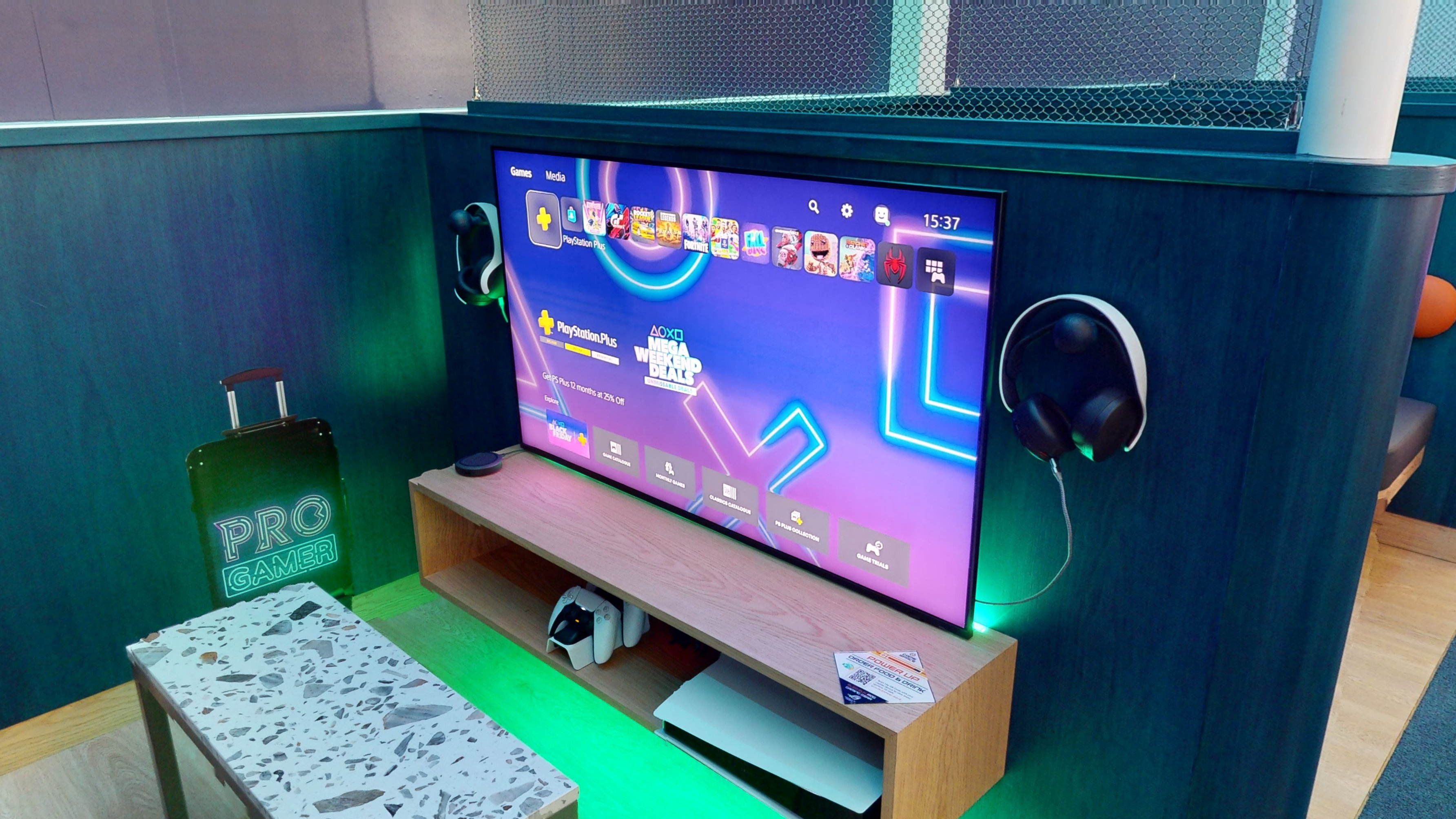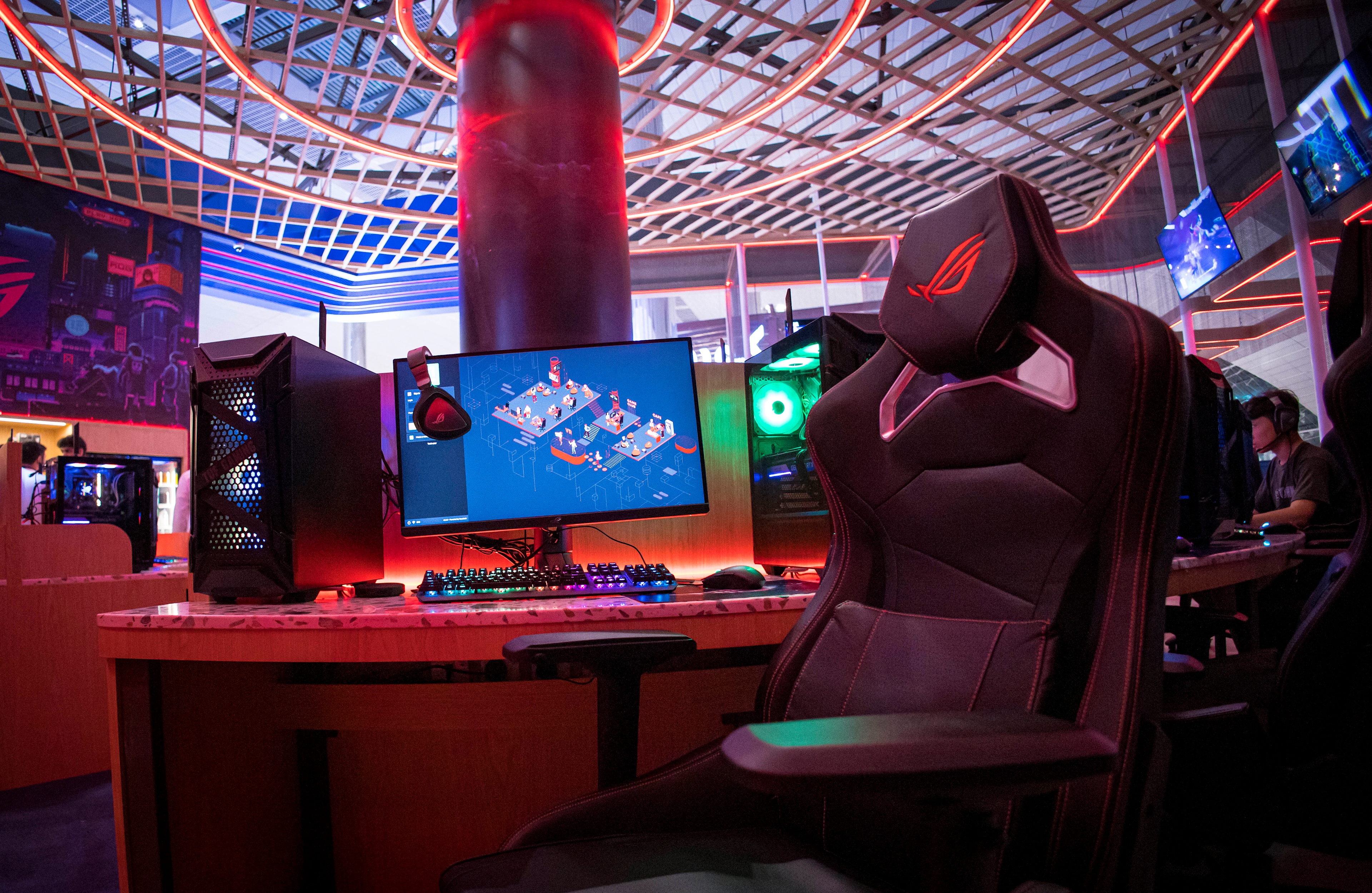How has Airport gaming shifted?
By Andrew Van Eeden, Vice President Global New Product & Innovations, Airport Dimensions
The gaming market over the past decade has shown remarkable growth, outearning traditional forms of entertainment and now projected to be worth $667.77 billion by 2030. The pandemic transformed the gaming industry, with the average viewership on streaming platforms such as Twitch averaging at around 2.5 million every day being bolstered by the growth of online personalities such as KSI and Kai Cenat.
Gaming in airports is not a new phenomenon - there have been arcade games littered throughout the concourse and dusty, outmoded PlayStations in childrens’ areas of airport lounges for a number of years now. But this isn’t cutting it with the consumers of today. The growth of the gaming sector both in terms of revenues created and increased cultural relevance have pushed alternative offerings such as Virtual Reality and simulation as a solution to both increase customer engagement and satisfy customer cravings for new experiences throughout their airport journey.
How have gaming propositions evolved over time?
Gaming has taken centre stage in the entertainment sphere of late, with more and more consumers becoming gamers. In airports there have been many examples over the years where gaming has been a part of customer experiences such as the Samsung Experiential hub at Doha Airport which allows travellers to enjoy the latest cutting-edge tech.
However, gaming has become increasingly engrained in consumers' lives and as a result they are looking for similar entertainment experiences as they travel through the airport with our Airport Experience Research 2024, which surveys over 9,000 regular travellers, finding that 70% of travellers are interested in experiences such as gaming.
Augmented reality technologies, such as the Formula 1 simulator located in Doha Hamad International Airport, now provide the ability and opportunity for airports to offer interactive experiences, turning wait times or delays into fun, engaging experiences which improve overall passenger satisfaction. One example of successful gaming propositions in action is Gamespace, the Middle East's inaugural gaming lounge in Dubai International Airport. The Gamespace lounge caters for travellers and gamers of all ages and gaming levels, offering access to current gen gaming as well as Playstation VR and Oculus augmented reality gaming, which provide even more options for customer interaction and engagement.
Which traveller segments does airport gaming resonate with?
Across our Airport Experience research it is evident that traveller demand is moving away from traditional revenue drivers such as traditional retail offers and becoming more experientially focused. Passengers of all types are now looking to spend increasingly on experiences and this goes for gaming propositions as well. Our research shows that new and innovative experiences such as sleep, gaming and wellness account for 21% of spend overall, and this pivot to experiences is further amplified for younger generations.
Younger travellers, in Gen Z and millennial segments, are less interested in spending on traditional amenities such as parking and fast track through to departure gates. According to Uswitch, 65% of 8-17 year olds cite online gaming as an important part of their lives which provides some rationale as to why our AX24 research found that alongside retail, younger travellers are interested in recreational experiences such as gaming.
Given their increased intended traveller frequency and inevitable role as the travellers of the future, airports should be employing gaming propositions as an alternative way for travellers to spend their time and money beyond traditional lounges.
How can alternative propositions support customer engagement?
Airports around the world are evolving from mere transit hubs into dynamic digital ecosystems, designed to enhance every aspect of the passenger journey. This shift is driven by a desire to provide more than just basic services; airports are now creating immersive environments where digital entertainment is seamlessly integrated. Among these innovations, gaming has emerged as a key element, transforming the airport experience into one focused on leisure and engagement rather than just waiting and transit.
One of the biggest frustrations for travellers is waiting, whether it’s at security checkpoints, boarding gates, or during flight delays. Gaming offers a solution to this challenge by providing an interactive and engaging way for passengers to spend their time. Airports that introduce dedicated gaming zones or offer access to digital games on personal devices can significantly reduce the perceived duration of these waits. When travellers are immersed in gameplay, the time seems to fly by, transforming what would have been a tedious wait into an enjoyable and entertaining experience.
Beyond enhancing passenger satisfaction, gaming also offers a financial benefit for airports. Engaged travellers tend to spend more time within the airport premises, which often translates to increased spending on food, beverages, retail, and other services. This increased dwell time is critical for airports aiming to boost their non-aeronautical revenue streams.
Clearly, with travellers more eager than ever for unique experiences, gaming presents a promising opportunity to elevate passenger engagement and satisfaction throughout their airport journey. We have already seen the launch of gaming propositions in US and UK markets in Charlotte International Airport and Manchester Airport respectively. So, as passengers become accustomed to enhanced entertainment options in their daily lives, what might the future hold for alternative offerings? When it comes to gaming, the only real limit is our imagination.

